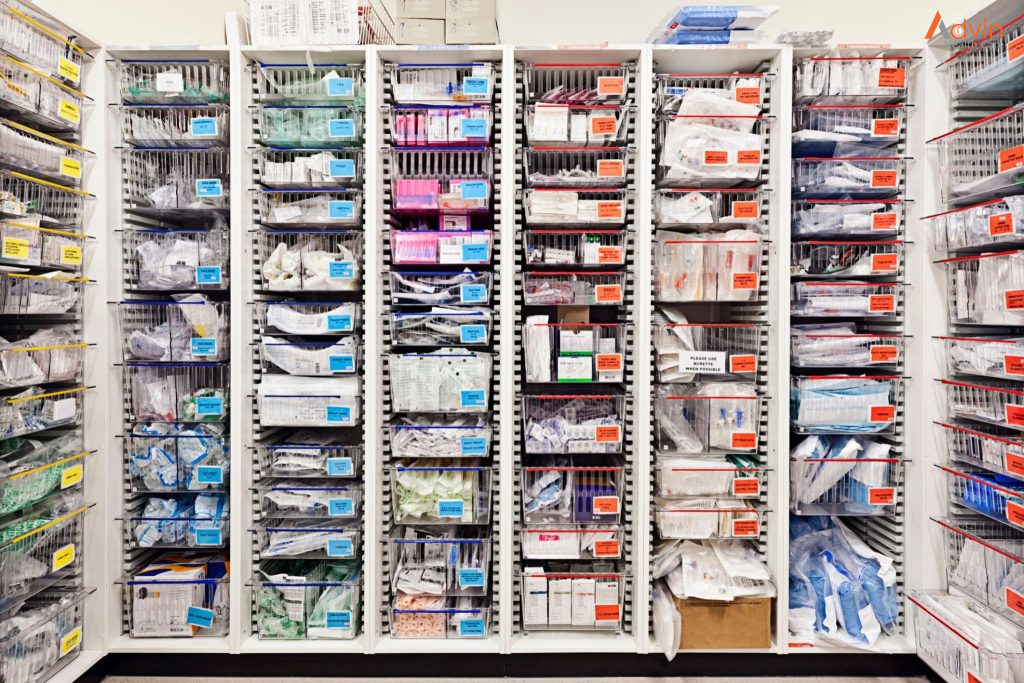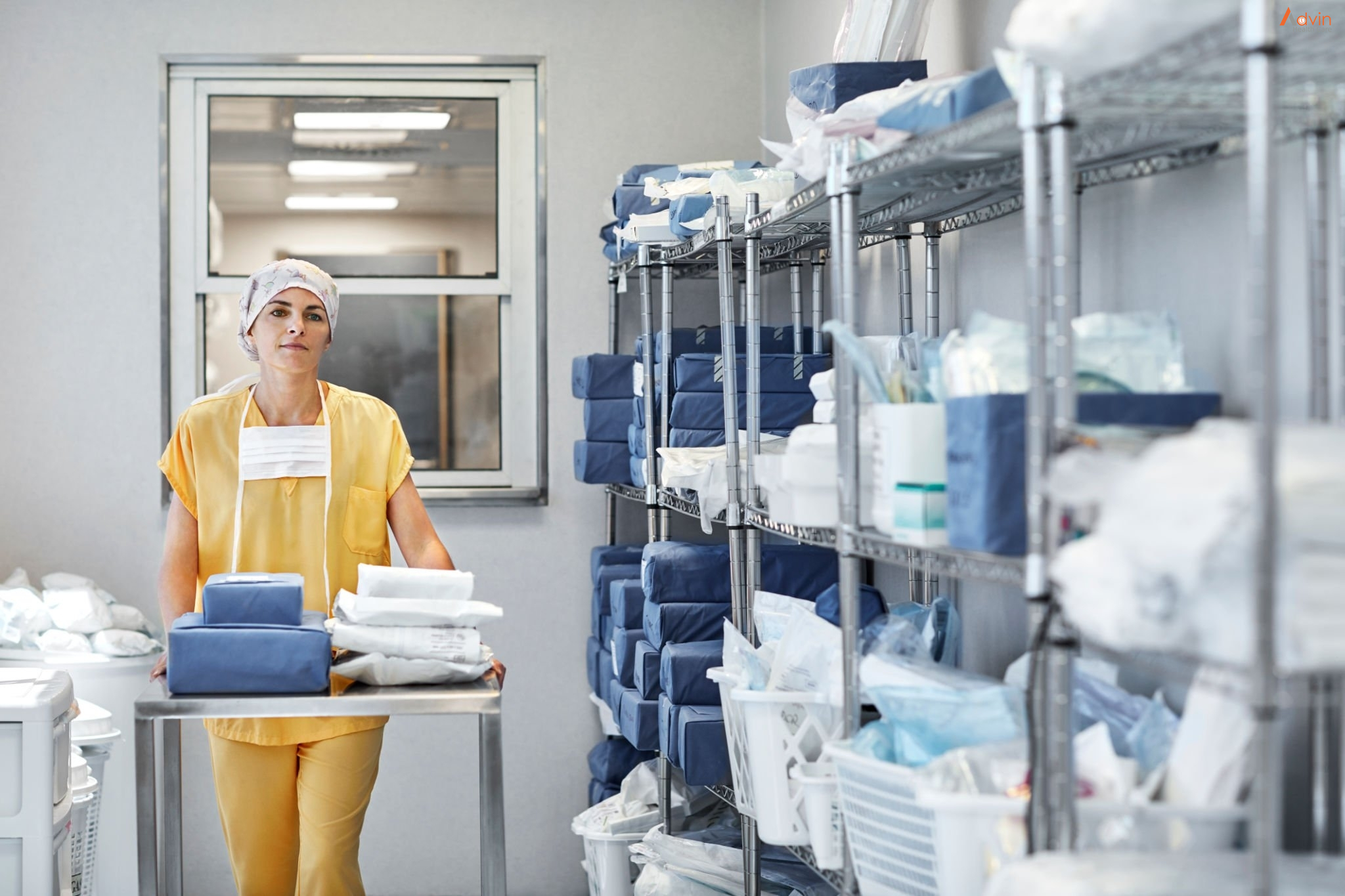According to the Food and Drug Administration (FDA), the governing entity in the United States that regulates medical devices, a single-use or disposable medical device is “intended for use on one patient during a single procedure. It is not intended to be reprocessed (cleaned, disinfected/sterilized) and used on another patient. The labelling may or may not identify the device as single use or disposable and does not include instructions for reprocessing.” The disposable medical supplies industry produces supplies you frequently see when you interact with a medical professional – bandages, hypodermic needles, exam gowns, gloves, catheters, surgical sponges, tongue depressors, syringes, pregnancy and drug tests, and face masks. Consumable medical devices are like disposable devices in that they also ultimately should be disposed of but can be used more than once or for a length of time. These include devices like elastic bandage wraps, pacemakers, and drill bits and blades for surgical instruments.
At Advin, we work with medical device use in Hospital of all shapes and sizes – small and large, start-up and established – that develop and manufacture a wide array of devices. No matter how varied the companies are, across the board their biggest concern is keeping patients safe. When designing a medical device, companies want to do everything they can to improve medical device UX, or user experience, and reduce the risk of harming their user. Disposable medical devices can help.
Anytime device companies can incorporate disposable elements or create entirely disposable medical products, they are improving patient safety and reducing risk. The primary reason is that using disposable medical supplies and devices prevents cross contamination between patients. Reusable medical devices must be completely and thoroughly sterilized before they can be used again. In addition to expanding design considerations for sterilization, companies are subject to increased regulatory responsibilities. The FDA has strict sterilization process controls; devices must prove they adhere to in the submission process. The role of sterilization and disposable medical devices in preventing the spread of disease has increased in relevance during the COVID-19 pandemic.
Not being able to properly sterilize a medical device can have serious consequences. In 2013, the Centers for Disease Control and Prevention (CDC) alerted the FDA of a potential connection between duodenoscopes, devices that pass into the small intestine, and antibiotic-resistant infections, even though users reported following proper cleaning and disinfection or sterilization protocols outlined by the manufacturer. Incidences such as these have led companies to design disposable elements like covers for non-disposable medical instruments.
Another critical benefit of disposable medical devices is durability, especially when it comes to consumable devices. By their nature, some devices, or individual components of the device, wear out after a certain period – lights burn out, batteries die, drill bits and blades dull, sensors break, and wires fray. This is also where the importance of testing and labelling comes in. Medical device companies must test to identify the average number of uses a device or component can withstand while working effectively and label the device accordingly to indicate how many times it can be used within the indicated safety margin. At
Disposable medical devices, or disposable components of devices, can help improve the health and safety of the patients we serve. That’s why, when we work with our clients on their medical device design, development, and regulatory submission, we look for opportunities where incorporating disposable elements makes the system safer. If any of our services can support your product, including our medical device prototype development.
Disposable or single-use medical devices are the ones that can only be used once and then needs to be discarded. When it comes to offering efficient healthcare services, hygiene and sanitation are the two important factors. Despite having a multitude of sterilization methods like chemical sterilization, heat sterilization, etc, there is always a scope of contamination left behind. And in this covid era, the transmission of infection is the first thing one needs to get rid of. Hence, the only way that absolutely eliminates the chance of contamination is the use of disposable products. Almost every industry is now switching to the use of single-use products as much as possible. Therefore, it becomes an essential choice for the healthcare industry.
Benefits of Disposable Medical Supplies

Here are some of the most common benefits that can be attained with the use of disposable medical products:
Prevention of infection – Research was conducted to investigate the presence of microbes on disposable and reusable medical products. More than 30 percent of the wet swabs taken from reusable products contained pathogens while most of the wet swabs taken from the disposable products were found sterile. In fact, the Center for Disease Control and Protection states that the use of disposable products improves patient safety by eliminating the risk of patient-to-patient contamination.
Saving time – The reusable products need to be cleaned and sterilized after every single use. On the other hand, single-use products are mostly ready to use and can be disposed of after use. This saves a lot of time for the medical practitioners and increases their efficiency.
Cost-cutting – Even though it may seem like an expensive choice to most practitioners, single-use products are in fact more cost-effective in the long term. This is because reusable devices have a high cost which further increases due to the need of purchasing additional accessories. Furthermore, the products require regular cleaning and maintenance. The extra cost is added for their regular sterilization.
On the other hand, single-use products are much cheaper, need the least maintenance, and do not require extensive sterilization procedures. There are no additional costs associated with the repair. Instead, they are capable of providing similar quality as that reusable products.
Impact on the environment – It may seem to many that disposable products have more detrimental effects on the environment, but this is not the case. If disposed of properly, the single-use products are environmentally-friendly. On the other hand, the waste produced in the form of chemicals and air pollutants while manufacturing reusable medical devices is much more harmful to the atmosphere.


